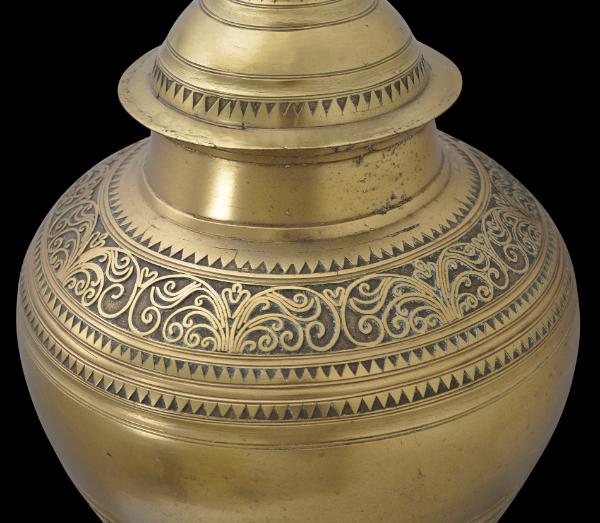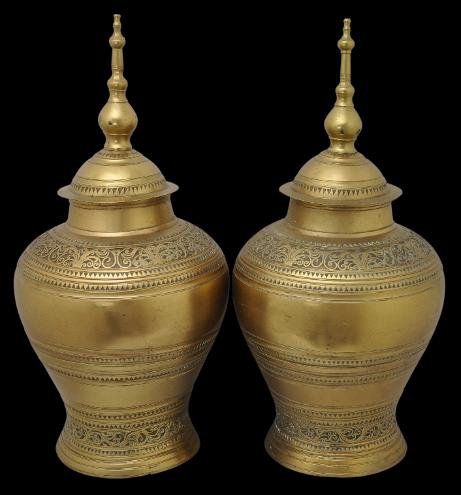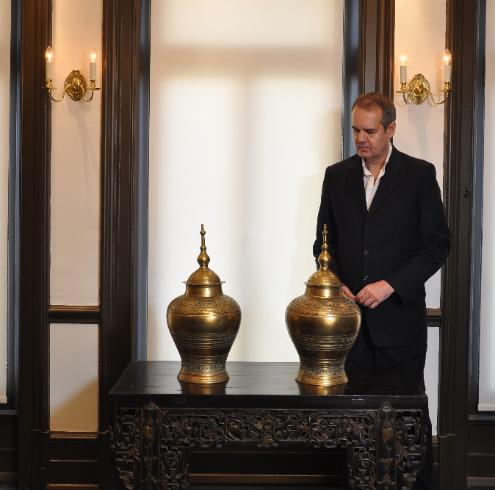
Moro Brass Jars
Pair of Large Brass Gadur Jars
Islamic Mindanao, Philippines
circa 1920
heights: 60cm, diameter: 28cm (approx.)
This pair of impressive covered brass jar have a distinct architectural from. From the Islamic Maranao people of the southern Philippines’ island of Mindanao, the form shows influence from Mughal India and the Persia. Equally, the form is suggestive of Chinese porcelain ginger jars. The flared feet and shulders are embellished with borders of applied brass work in the form of scrolling foliage and flowers (lukis sampaka). The lids are domed and finish with tall spires.
They belong to a group of jars known as
gadurs or gadors. Fraser-Lu (1989, p. 108) says that gadur jars were used to hold the ceremonial gifts for the bride’s family given by the groom’s relatives during wedding festivals. Afable et al (2013, p. 143) says that gadurs were displayed in Maranao households and usually were received as gifts to for special occasions. Casal et al (1981, p. 155) says that gadurs were exchanged as gifts at weddings between wealthy people. Quite possibly, they also served as a store of wealth and as a visible display of wealth and prestige, and even as a means of exchange in the way that brassware items were used in nearby Borneo.
The pair have been cast in brass using the lost wax technique. They are in excellent condition apart from very minor, shallow denting here and there which is age and use related.
References
Afable, P., et al, Philippines: an Archipelago of Exchange, ACTES SUD/ Musee du Quai Branly, 2013.
Barados, D.,
Land of the Morning: Treasures of the Philippines, San Francisco Craft & Folk Museum, 1995.
Casal, G.
et al, The People and Art of the Philippines, UCLA Museum of Cultural History, 1981.
Fernando-Amilbangsa, L.,
Visual Arts of the Sulu Archipelago, Ateneo de Manila University Press, 2005.
Fraser-Lu, S.,
Silverware of South-East Asia, Oxford University Press, 1989.Provenance:
UK art market
Inventory no.: 2565
SOLD






